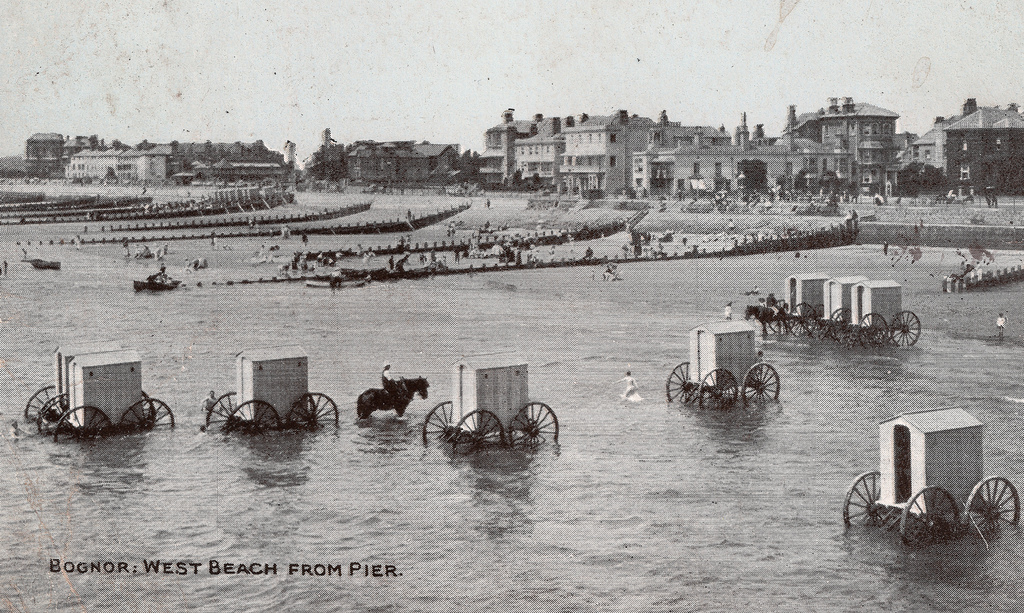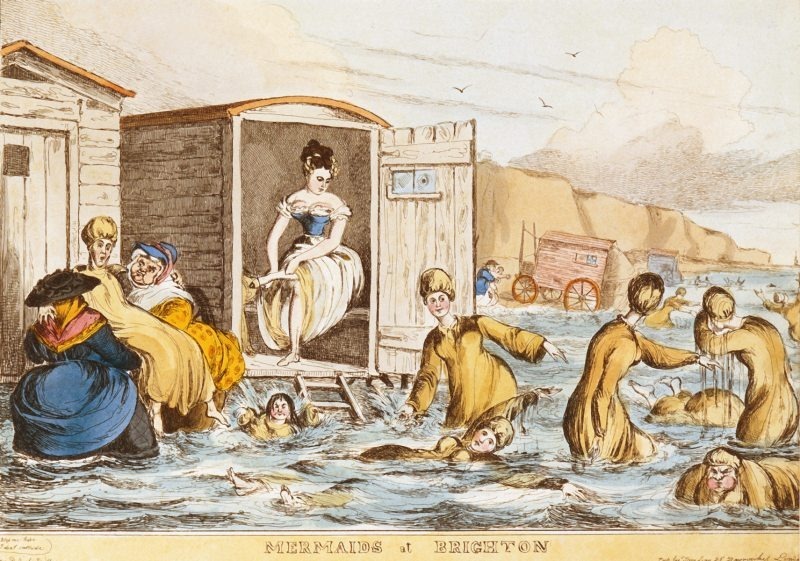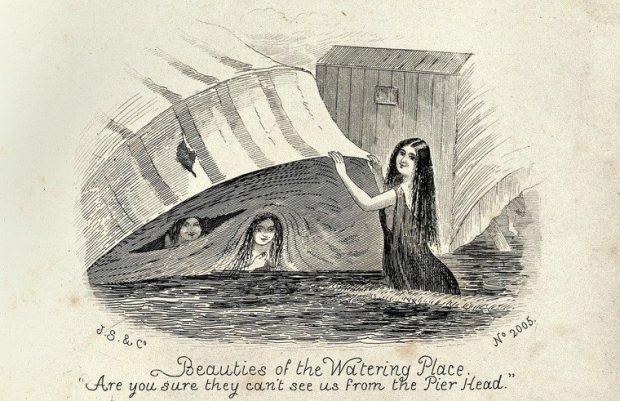I don’t know about you, but to me, it feels like a decade since the last summer. Having the pandemic hit in the middle of winter and summer has made carefree days of warm weather seem like a far off dream, and it feels so good to know that it is fast approaching.
So, let’s have some fun with it! All summer long I will be sharing fun posts about the history of women and summer. We all know that bikinis, beer, and Spotify haven’t always been the reality of women’s summer days, so how did we get here? How did women spend a warm summer day in Victorian times? How did we get from wearing tights and long-sleeved swimwear on the beach to ‘anything goes’?
This week I will start by introducing you to the bathing machine, a contraption developed to assist women in Victorian times to enjoy the new trend of venturing into ocean waters and spending free time at the beach. I will also argue why it is an item from days of yore that I’d like to see return.
The Introduction of the Bathing Machine
The first bathing machines are dated back to the 1750s, when enjoying natural waters first required a swimsuit. Prior, when such activity did take place, it often did without any clothing and typically in seclusion. However, as the 1700s approached their end, sunbathing and beach-going emerged as popular leisure activities, and swimwear was invented. Ironically, the attire was seen as improper for females, and the story of the bathing house begins.
In 1832, Britain regulations mandated that sunbathing in public spaces be a gender-segregated activity with laws requiring men and women to remain 60 feet apart on the beach. This, along with beach days being seen as increasingly posh, elevated the popularity of the bathing machine.
How It Worked
If you can close your eyes and picture the colorful wooden changing rooms or “beach boxes” that line popular beaches in various parts of the world, you are nearly there. Now, close your eyes and picture the same wooden box, but this time resting on large wheels. You are now picturing a bathing machine.
The bathing machines would sit near the shore, patiently soaking up the sun and waiting to be put into use. This would happen when a gentle Victorian woman, in full street clothes, would enter. Once inside, she would change into her bathing attire and then signal that she was ready to be wheeled out to sea. This would be accomplished either by horse or a female staff member.

The bathing machine had a front and back door. The front door was to enter while still in street clothing, while the back door was to be used to enter the water. The contraption was wheeled out into the water far enough away from the shore and faced with the front door towards the other beach goers. Thus, as much privacy as possible was given for those enjoying the water. Often, multiple women in their personal bathing machines would form a half-circle, providing even more privacy.

Enjoying a Bathing Machine
Once secure in the water, a woman would be free to enjoy sitting on the partially submerged steps of the machine or venture into the water.
My favorite aspect of the bathing machine custom is the various tasks the accompanying staff member was charged with. For instance, if a woman lacked swimming skills, the individual would act as the “dipper;” dunking her into the water, and then assisting her back to the surface. While this, to me, sounds like a good way to get me to lose my temper, for a person enjoying a bathing machine it was simply seen as part of the experience.
Despite the effort, the bathing machine was not a luxury to allow one to spend the day enjoying the water. Spending recreational time at the shore was a very new pastime, and taking a bathing machine into the waves was viewed as a trendy experience to undertake as a small part of the day. Most of what I read stated that women would typically use the bathing machine for under an hour.
Where Did it Go?
When the 1900s hit, a rapid transformation of society took place. Britain revoked laws prohibiting mixed-sex sunbathing, making bathing machines a group affair. But as women quickly refused to be limited or bound by tradition or Victorian morales, the need for privacy evaporated as well. The shore became a place for all to enjoy a day at the beach and bathing machines were replace by beach towels and rowboats.
I rather like the idea of having a floating box in the ocean to enjoy while I soak up ocean water. I’ve never enjoyed swimming for long periods of time in the ocean and think I’d love a way to go in and out more easily. Maybe this is another Victorian trend that needs to be reintroduced!














Great article! I would like to see this revived too. I love the water but am not much of a beach person because I don’t like worrying what’s under my feet in the water and for years the only “water shoes” were tennies and they got heavy when wet. I like the idea of being able to enjoy the water but not having to put my feet down.
Thank you for writing these nice blogs!
It gives an extra dimesion to Recollections!!